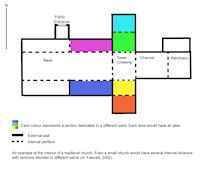
Figure 9: Example of interior subdivision in medieval churches
'...the superstitious observation of fasting days...prayer for the dead ...[in purgatory], and keeping of holy dayes of certaine Saints...the feasts (as they terme them) of the Apostles, Martyres, Virgines, of Christmasse...which things because in Gods Scriptures they neither have commandment nor assurance, we judge them utterly to be abolished from this Realme' (Knox 1972 [1621] [1559], 88-9).
Inherent in the concept of the New Jerusalem and of the Word as the sole vehicle to salvation, was that all non-biblically attested additions to Christianity must be removed. The very structures of life and death were radically re-interpreted by Reformed doctrine, as festivals and feasts that once marked the passage of seasons and sanctified times and places became punishable, and the community spirit they engendered set aside (Knox 1972 [1621] [1559], 88-9). The medieval Church had stimulated the senses: the half-glimpsed ritual of transubstantiation before eating the bread and wine; half-heard snatches of Latin rites (Spicer 2003, 30; Duffy 2005, 91-130). Salvation was accommodated in churches subdivided by screens to house the saintly and sacramental; endless altars, sedilia, piscinae, stoups, lofts and tombs, and illustrated by paintings, tapestries and stained glass depicting Jesus, the Virgin Mary and the Saints. From above, they watched over the community of the church and interceded on their behalf. Supported by holy relics, saintly burials, wells and shrines, each part of the medieval church offered an illustrated way to avoid damnation, and a foretaste of heaven (Fig. 9; Fawcett 2002, 321-6; Yates 2008).
The medieval faith was one of acts. Faith could be expressed through bleeding blistered feet on long pilgrimages; through sweating long and hard to build and repair cathedrals and churches; through dutifully tending to the sick and dying; to lovingly caring for the effigies of favoured saints (Calvin 1975 [1536]). With the Reformation, familiar experience was literally dismantled, the many experiences that once brought ordinary people closer to God no longer validated by their church. Reformed worship was intended to be one of intellect, or words and thoughts (Calvin 1975). Even the sanctity of the church itself shifted as the cult of the saints and their relics was officially abolished, with churches refocusing away from interior burials and prayers to the saints and for the dead (Knox 1972 [1621] [1559], 88-9). However, persistent observation of ritual pilgrimages to holy wells (Todd 2002, 204-9), and the fact that presbyteries battled for many years to prevent burials within church interiors shows this was not a readily accepted transition (Bossy 1985, 12; Graham 1996, 179-80; Arnold 2005, 130-6 and 163-9).
Choose your own | Iconoclasm | Repentance Stool | Discipline Culture
© Internet Archaeology/Author(s)
University of York legal statements | Terms and Conditions
| File last updated: Thu May 26 2011